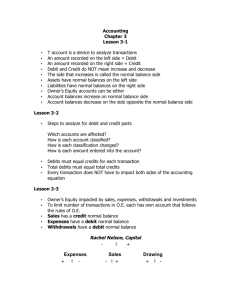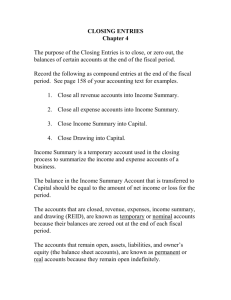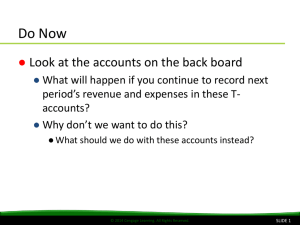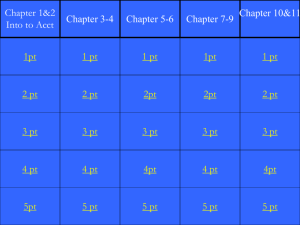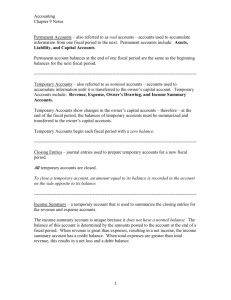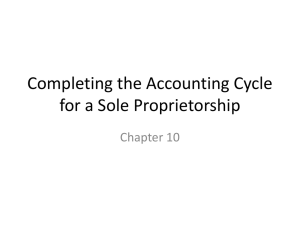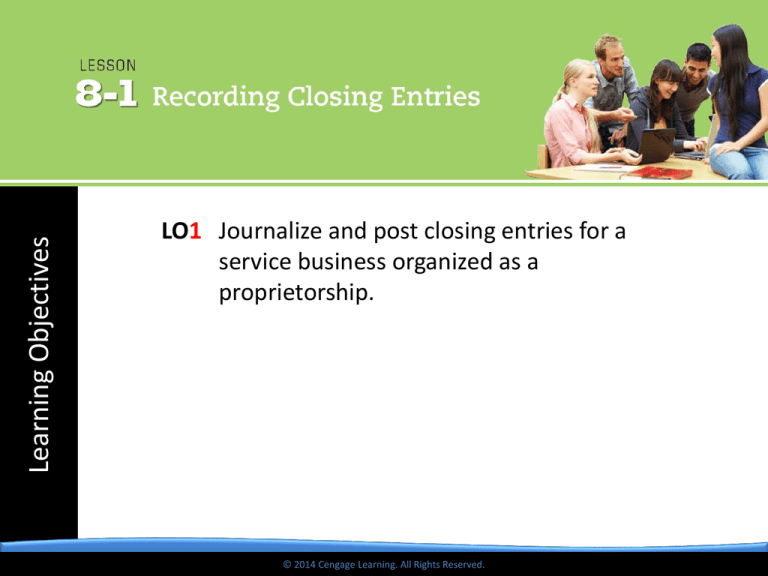
Learning Objectives
LO1 Journalize and post closing entries for a
service business organized as a
proprietorship.
© 2014 Cengage Learning. All Rights Reserved.
Lesson 8-1
Need for Permanent and Temporary Accounts
LO1
● Accounts used to accumulate information from
one fiscal period to the next are called
permanent accounts.
● Permanent accounts are also referred to as real
accounts.
● Accounts used to accumulate information until it
is transferred to the owner’s capital account are
called temporary accounts.
● Temporary accounts are also referred to as nominal
accounts.
© 2014 Cengage Learning. All Rights Reserved.
SLIDE 2
Lesson 8-1
Need for Closing Temporary Accounts
LO1
● Journal entries used to prepare temporary
accounts for a new fiscal period are called
closing entries.
● The temporary account balances must be
reduced to zero at the end of each fiscal
period.
© 2014 Cengage Learning. All Rights Reserved.
SLIDE 3
Lesson 8-1
Need for the Income Summary Account
LO1
● When revenue is greater than total expenses, resulting in a net income,
the Income Summary account has a credit balance, as shown in the T
account.
Income Summary
Debit
Total expenses
Credit
Revenue (greater than expenses)
(Credit balance is the net income.)
● When total expenses are greater than revenue, resulting in a net loss, the
Income Summary account has a debit balance, as shown in the T account.
Income Summary
Debit
Total expenses (greater than revenue)
(Debit balance is the net loss.)
© 2014 Cengage Learning. All Rights Reserved.
Credit
Revenue
SLIDE 4
Lesson 8-1
Closing Entry for an Income Statement
Account with a Credit Balance
Closing
Sales
5,820.00 Bal.
(New Bal.
LO1
5,820.00
0.00)
Income Summary
Closing (revenue) 5,820.00
(Debit to close)
3
Heading 1
Debit
Date 2
4
© 2014 Cengage Learning. All Rights Reserved.
Credit
SLIDE 5
Lesson 8-1
Closing Entry for Income Statement
Accounts with Debit Balances
LO1
(Credit to close)
Debit Amount
Income Summary
Date
Credit
© 2014 Cengage Learning. All Rights Reserved.
SLIDE 6
Lesson 8-1
Closing Entry to Record Net Income or Loss
and Close the Income Summary Account
LO1
(Capital: credit to
record net income)
Debit
2
(Income Summary:
debit to close)
Date 1
3
Credit
© 2014 Cengage Learning. All Rights Reserved.
SLIDE 7
Lesson 8-1
Closing Entry for the Owner’s Drawing
Account
LO1
(Credit to close)
Date 1
2
Debit
3
Credit
© 2014 Cengage Learning. All Rights Reserved.
SLIDE 8
Lesson 8-1
Lesson 8-1 Audit Your Understanding
1. What do the ending balances of permanent
accounts for one fiscal period represent at
the beginning of the next fiscal period?
ANSWER
Beginning balances
© 2014 Cengage Learning. All Rights Reserved.
SLIDE 9
Lesson 8-1
Lesson 8-1 Audit Your Understanding
2. What do the balances of temporary accounts
show?
ANSWER
Changes in the owner’s capital account for
a single fiscal period.
© 2014 Cengage Learning. All Rights Reserved.
SLIDE 10
Lesson 8-1
Lesson 8-1 Audit Your Understanding
3. List the four closing entries.
ANSWER
1. An entry to close income statement accounts
with credit balances.
2. An entry to close income statement accounts
with debit balances.
3. An entry to record net income or net loss and
close the Income Summary account.
4. An entry to close the owner’s drawing account.
© 2014 Cengage Learning. All Rights Reserved.
SLIDE 11


